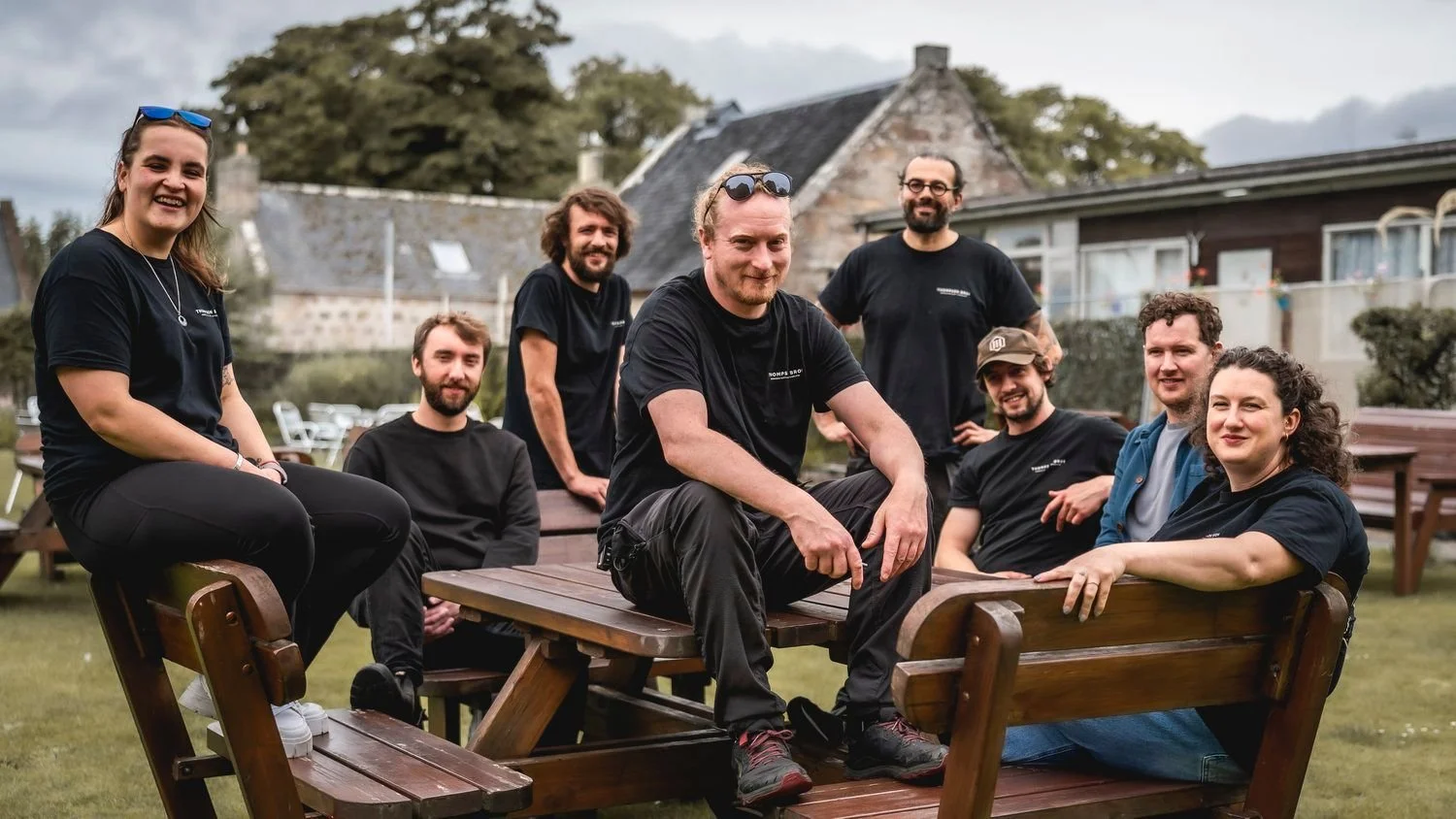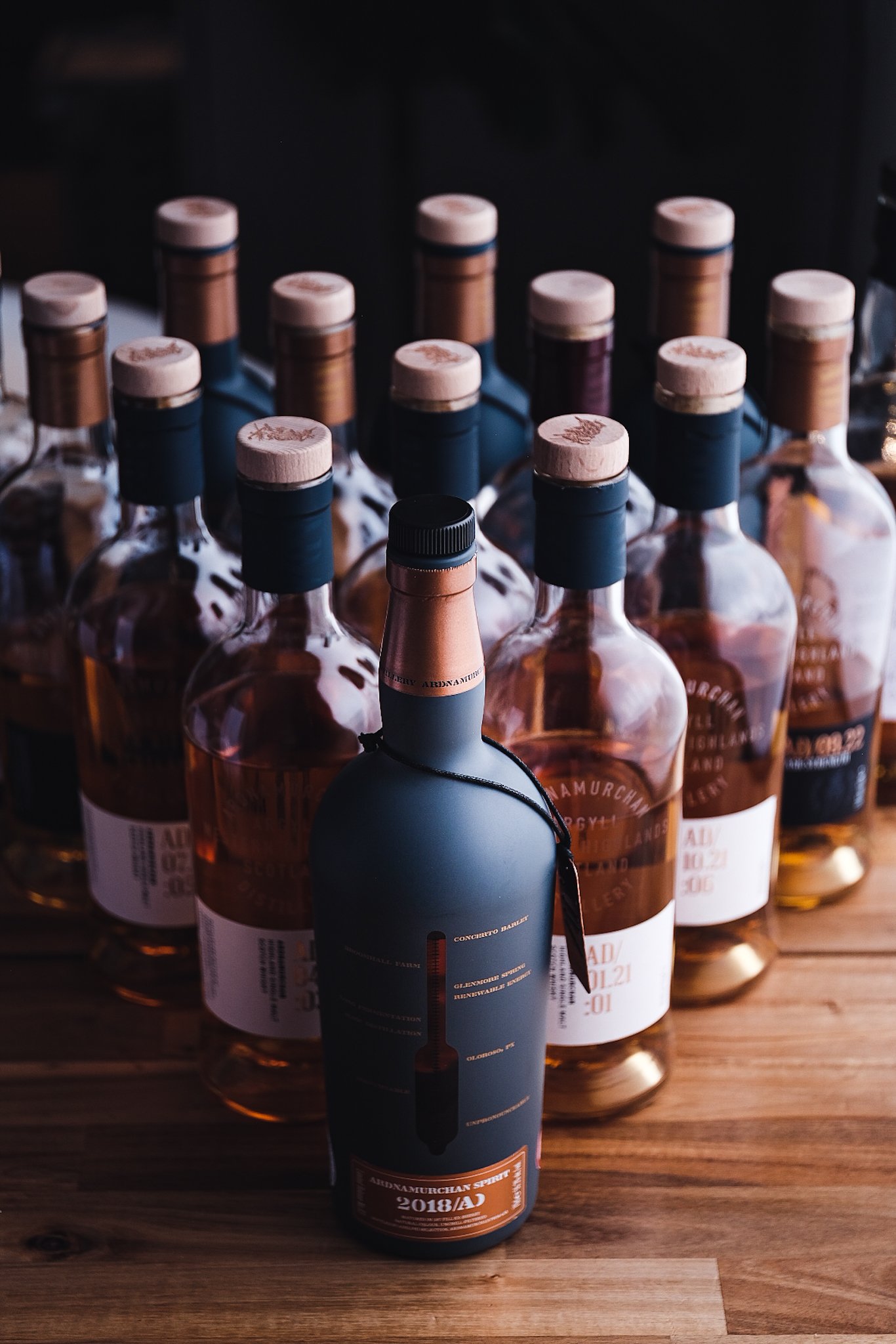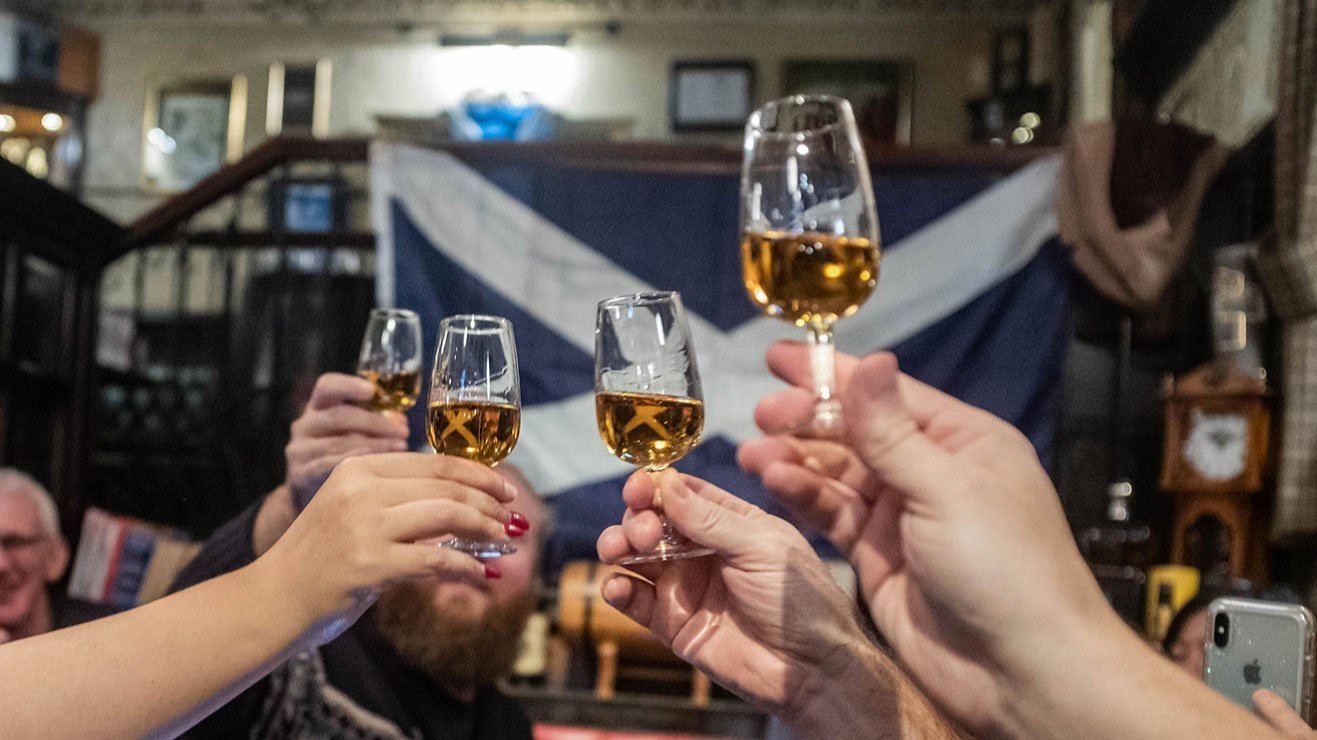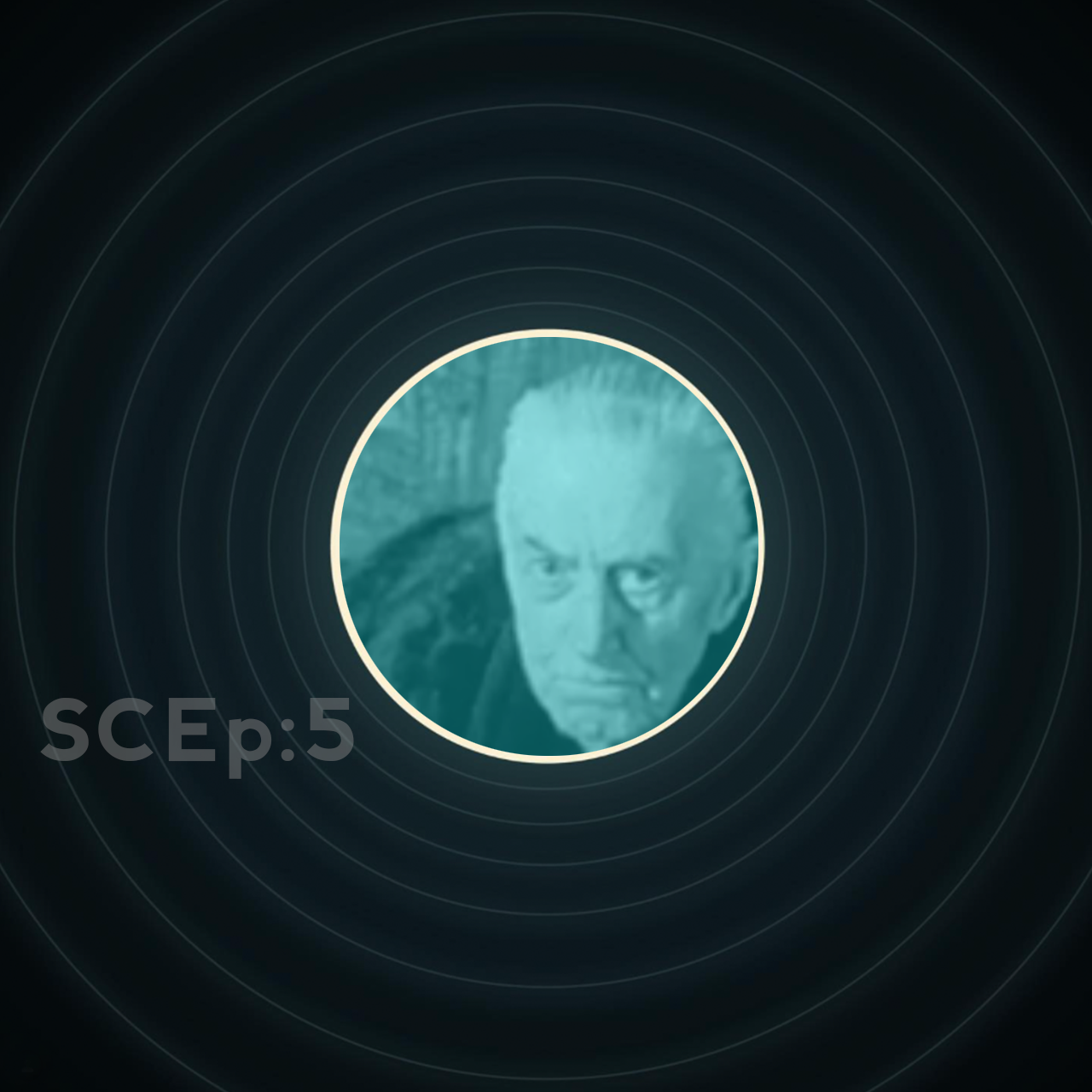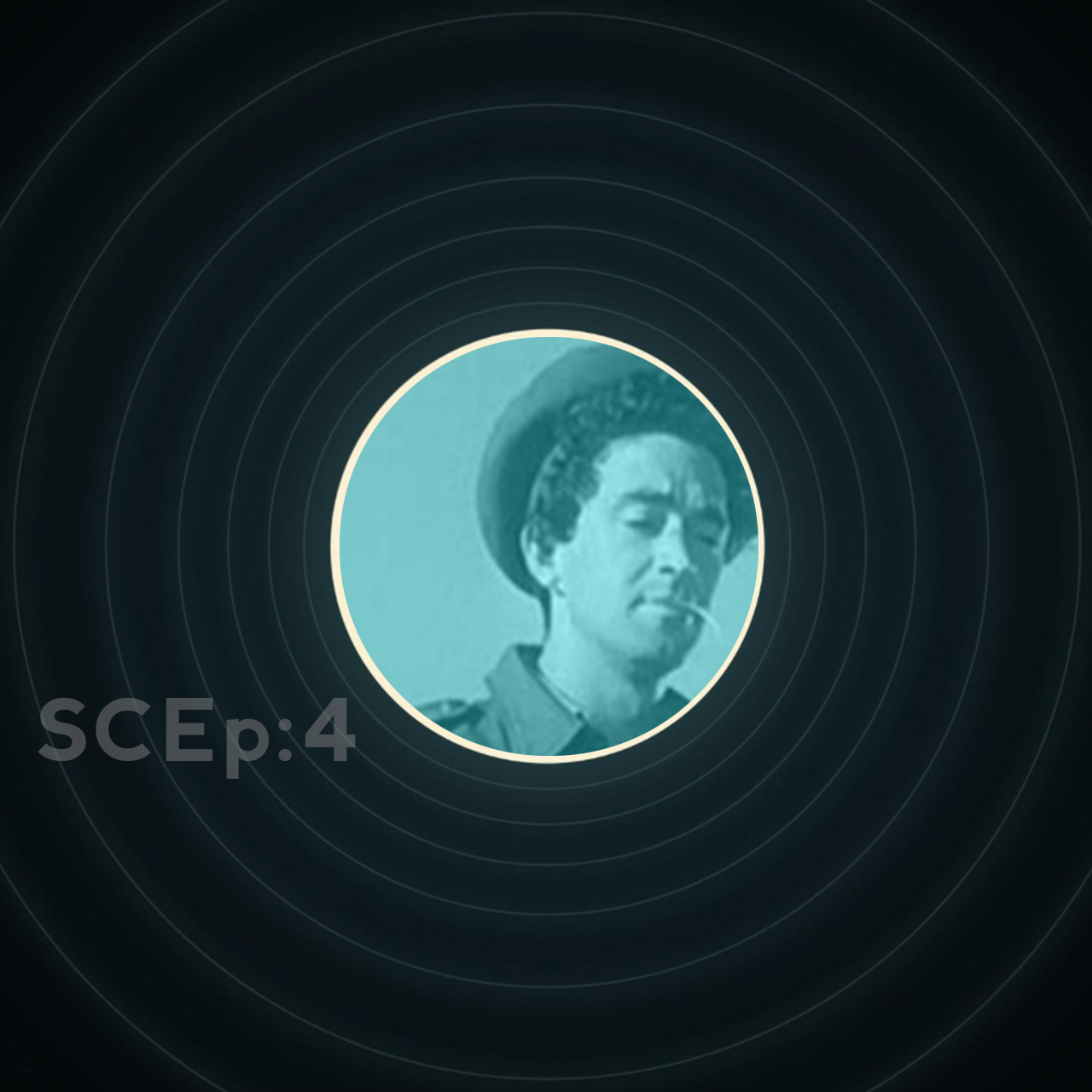Wire Works Alter Ego
White Peak Distillery | 51.5% ABV
Score: 7/10
Very Good Indeed.
TL;DR
Big, bold flavour hooks from Englandshire.
Togetherness.
More than a week on from the collision of whisky enthusiasts that travelled across the globe to meet in Glasgow for a long weekend of festivities, I still feel jazzed.
Often, after last drams are poured at festivals, or when driving away from distillery tours, or after watching another vPub, I’ll feel a bit distant from Whiskyville. It’s probably a consequence of living where I do, but I often experience post-whisky fun slumps.
The enjoyment of whisky for me has always been primarily the smell and taste of it, which is why I got into this hobby in the first place. Soon it morphed into a hybrid of enjoying drinking whisky and sharing it with others, to get their thoughts, their experiences and their take - hello Dramface.
In recent times the community aspect has become more important to me than the drams. Yes, I still gush about whisky, the drink, because I absolutely love it and, as a patriotic Scotsman, I swell with pride at having a working knowledge of the Uisge Beatha, for those (rare) times when someone asks about it. It’s nice to be able to field some questions and have some semblance of direction to point them, should there be a starting point requested.
When that podcast light flickers into life though, and I see four other beautiful souls staring back at me, I feel so happy. I love being part of this community of exciters. It’s fulfilling in a way many other parts of life are not. There’s no struggle in whisky excitement, for the product itself promotes fun: in the discovery of new whisky, new smells, new flavours, new bottle designs, new producers, new casks, new distilleries and new friends. I don’t get anywhere near the same fun from other things as I do in whisky, and from the glorious community that huddles around it.
Togetherness. If I were to use a word to sum it up, it’s that. When I hit the pavement on the Friday of the Glasgow weekend of dreams, having driven from Edinburgh Airport in record time to make the Under the Table Tasting that Roy had so magnificently arranged, I was in a complete panic to get to the event as soon as physically possible.
My car door wouldn’t open quick enough. The bags wouldn’t leave the snagged confines of a jam-packed boot quick enough. The hotel manager, despite frisbeeing the keycards across the room to save me time, couldn’t throw them fast enough. And the taxi that arrived three minutes after I pushed the wee button on the hotel’s check-in desk to magically summon a motor vehicle from whatever dark corner it was hiding, couldn’t drive fast enough across the city to deliver me to The Piper Whisky Bar. I opened Google Maps to see how close we were, and see if I could offer the cabbie pointers.
Which is why I nearly crashed over the tables and swept all the Glencairns from the top in the process, because I was in such a jittering superspeed frame of mind not to miss any single minute of fun. Even Gregor, Mr. Cool Cat Himself, had to have a quiet word in my ear to cool my jets. Within a few moments I was settled, my heart rate had reduced to manageable levels and, as I cast my eyes around my table of Seve, Gregor and Rolfy, and then around the room at all the faces I knew, I felt like I belonged once again.
I was here. With my pals. People who accept me for who I am, and don’t question why I’m there. People who grip you in an embrace so tight that you feel like a wee child again getting a reassuring hug from your Dad. The people who, if I stuck up my hand and said I wasn’t doing so well, they’d swoop in and offer help, even if we hadn’t had much interaction yet. It’s an environment of safety and selflessness.
That community of folk, whisky folk, is why I endure all the less exciting stuff happening outside of whisky. The liquid has almost become incidental to the human experience of how it feels to drink whisky with pals, rather than the sole pursuit of analysing the whisky in isolation.
I’m no socialite, but when I’m around others who feel as safe as I do to say things like “this smells like the inside of a Chilli Heatwave Doritos packet”, and have the group sincerely check to see if they can find it in their glass too, I feel seen. More often than not it’s because I’ve just picked my nose having just scoffed some crisps, but there we go - I think we all thrive off the shared experience of discovery and promote safe spaces within which to be ourselves.
I hope there’s never a day that comes when I’m not part of whisky.
Pic from the resident Podcast Master, Gregor McWee, with thanks
As we listened intently, in a room full of fizzing electricity, to the representatives from each of the seven whiskies sitting on our tables in front of us, each pour was as interesting as the whiskies on either side. Of course we all have our leanings - Gregor loves a sherry bomb, Seve loves a weird and wonderful, and Rolfy loves…everything and everyone, but after a 27yo Enigma blend from Cadenhead’s, the second whisky out the gate was a Glencadam 16yo in Calvados that immediately summoned the eyebrows to the back of my head. Unbelievably delicious apple pie magic.
The next few drams were more aligned to other preferences than mine, but the 5th dram had me slapping my leg in disbelief at how liquid, distilled through some machines and stuck in a lump of wood, can create such an olfactory and taste response that the body physically reacts without prompting. Alongside the Glencadam, this whisky was firing up all the lightbulbs inside my enjoyment resource centre.
Due to Seve whispering across the table about how close this was to a cask of whisky he has maturing in this particular distillery, and how amazing it’ll be to see how the wee sample bottle he had in his pocket compared to the dram poured by Tom Lindsey, White Peak Whisky Maker, Ambassador, Cask Custodian and community interfacer who was currently explaining how this whisky came to be, I didn’t hear any of it. We asked Gregor what he said, he told us in no uncertain terms to get tae and stop whispering. I was ok with it, because when Seve speaks, I listen.
Sure enough, Seve’s whisky - a few years younger than the one poured by Tom and sitting at a quite remarkable 68.3% ABV - was astonishingly good. It was not hot or difficult to sip, which prompted a chat about what makes a whisky “hot” in the first place. It was insanely flavourful - a flavour missile. It was complex and engaging, and I wish I had some more to sit with in a quiet corner somewhere, because I bet it would reveal some fantastic notes.
The whisky in the glass from Tom had been reduced in ABV using a technique called Petites Eaux - “small waters” in that there French.
In an effort to reclaim myself and give facts instead of conjecture, I reached out to Tom over the mobile telephony system to see if he would be kind enough to explain Petite Eaux, and whether or not this is standard practice for Wire Works bottlings in general. His response was thus:
This was purely an experiment, so not something we have applied to our whisky releases, to date, and only a small amount was laid down nearly three years ago now. It is a practice sometimes done in Cognac production, and involves ageing rather low proof spirits, in our case 15% ABV for 5 years, to access some of the water soluble compounds, and an abundance fatty acids in the wood. The fatty acids have the ability to carry flavour in the final spirit, and also provide great oily texture. It’s worth noting, it’s these fatty acids that get culled when the heinous crime of chill-filtration is committed. This low proof spirit can then be used as proofing ‘water’ for lowering cask strength whisky down to the desired bottling strength.
In the case of the sample I brought along to Roy’s event in Glasgow, the 15% spirit (actually sat at 14% after the angels had their way over time) was used to proof down a single cask sample of an American oak re-charred wine barrique, aged in our upper dunnage, sat at a whopping 69.2% (originally filled at 70%), and tempered to a healthy 57.8% Abv. Our whisky is already getting known for its oily texture, but this process seemed to dial that attribute up to 11, and I was pleased to see the crowd at the event appeared to really like it.
Slow proofing:
Although we don’t typically use Petites Eaux in our releases, one thing we do as a matter of course is slow-proofing. This is simply the process of taking our time over the dilution process between cask and bottle. We may take several weeks to add a few hundred litres of water in total, in small increments every couple of days. The idea is this dramatically reduces the damaging of delicate esters, as the combining of ethanol and water is exothermic, as in it gives off heat. Crash-proofing high strength alcohol down by 10-15% in one hit can raise its temperature by a good few degrees instantly. You can also avoid saponification by slow-proofing, which is the introduction of soapy flavours in the whisky. Nobody wants that.
The Under the Table tasting in The Piper Whisky Bar, Glasgow - McWee Photo
After I sent my request to Tom for his thoughts, I also asked the Dramface writer’s group what their thoughts were on Petites Eaux, and as always the inimitable Tyree stepped up:
There's a few bits to this; any dilution (before bottling at least) seeks to achieve a few things. Firstly, there's an idea that volatiles shouldn't be blown off in excess. The degree of this is arguably low for simple ABV changes (simply the volatiles that are lost due to a change in their solubility as the ethanol matrix is disrupted by the addition of water molecules), but it does happen, and unfortunately there's no way to get around this volatile loss no matter how you go about dilution.
Dilution is also exothermic though, so there's an idea that doing the dilution slowly releases the heat more slowly, and allows it to be dissipated to the environment without causing a significant change in the liquid's temperature, which reduces the loss of volatiles. The net heat release is the same, it's just how much of a temperature spike it causes in the liquid based on rates.
While the reaction is exothermic, small delta ABV correlates to small delta temp, so this heating could probably be avoided even when dropping ABV by a few points at a time, which would see dilution done in most instances in days to weeks not months (as some insist on doing, especially in French brandies for instance).
There's a large lack of data here, but certainly if you want to get in the weeds on enthalpies of mixing versus specific heat capacities of ethanol/water mixtures, you can see that heating effects for small changes are minimal, although because the enthalpy of mixing is non-linear it does depend on what the starting ABV is (peak exothermic behaviour is around 50% ABV from memory, and generally changes are larger at higher ABV and smaller at lower ABV). Certainly in the projects I've worked on, we haven't observed any ill effect at the days-to-weeks time scale.
There's also an idea of wanting to "marry" and integrate flavours through dilution, and that this happens better when done slowly. With the exception of saponification (see below), this is basically just a discussion about equilibria points in reversible reactions, so the idea is after dilution is done, if you leave the whisky for a while (some might call this bottle shock, although it's a different mechanism to what people talk about in wine, which is part science and part wank) the whisky's profile will "even out" as the equilibria points are reached over time.
Lastly, there's saponification, and potentially non-reversible flocculation. The flocculation is caused by reaction of oxalates with metal ions (calcium is the biggie, bit of potassium can precipitate too) with oxalates; calcium oxalate is also known as beer stone, and makes up a major aspect of many kidney stones. This is only a concern if water with ions is used in dilution, which is one reason most distilleries now use reverse osmosis water for dilution.
Saponification as it pertains to whisky is the process of ester hydrolysis to form fatty acid (carboxylate) salts plus alcohols; this relies on alkali conditions with a salt for the fatty acid to saponify with. In reverse osmosis water, the water has had salts removed and is not alkaline, so the chances of observing saponification is minimal regardless of dilution rate. Saponification is catalysed by heat though, and so some people dilute slowly to try to avoid undesirable conditions.
A lot of the "Slow proofing" ideas come from French brandies and other French spirits (no finger pointing intended!), and while things like the saponification avoidance may have been more valid back when it was harder to come by deionized and neutral water, much of it in the modern age appears to be tradition turned into superstition. Doesn't mean it hurts anything to go slowly, except efficiency, but still. Most appear to be doing it as a "just in case".
The "Small waters" thing is interesting though because the significantly lower ABV mixture in barrel will pull more water soluble compounds from the barrel before being used in dilution, so that may have an impact on flavour regarding cask extract.
So there.
Review
Wire Works Alter Ego, Limited Edition, Batch of 5,393 bottles, 51.5% ABV
£65 on White Peak website (£55-60 online)
In the pursuit of heightened, more delicious engaging flavour, White Peak Distillery are doing some interesting things, and despite not hearing what Petites Eaux meant at the time, or understanding that there’s such a thing used in whisky, or that White Peak use slow proofing as standard, I did catch a lot of what Tom was saying about why he brought such a cool whisky to this event - because he knew that he would be up against some seriously big hitting drams, and that we, as exciters, are into all that cool stuff. The room was vibrating with enjoyment.
On the Sunday, after the Blind Challenge and a good feed, we settled into some nice wee whiskies and some super chat. I listened in as Roy chatted to Tom about White Peak and what they’re doing, with a tongue-in-cheek request to lower the price perhaps by £5-10, if they could. Roy bounced off to fold some other Barflies in half with his bakery anectodes, and Tom and I were soon chatting alone. Off the back of that fleeting jibe, I asked him what drives the price of their whisky, when they’re so often placed alongside places like Ardnamurchan, Glasgow, Lochlea, Nc’nean et al.
White Peak (WP) are small. Very small. Their estimated capacity is 160,000lpa, but they’re currently ticking along at 65,000lpa which, going by the various capacities listed in the Malt Whisky Yearbook, puts them in the same league as GlenWyvis, Ballindaloch and Nc’Nean. Less whisky in casks means more value per cask; those wooden vessels are also higher priced because WP are not buying lorry loads of casks each week. Economies of scale are working against WP here, much like the aforementioned smaller distilleries, so as a result their whisky, as accountants would argue, has to be that wee bit more expensive.
All that's to say, whilst WP and the whisky arm of Wire Works do command a higher asking price than contemporaries, there’s legitimate reasons for that extra weight on top. I’ve just checked their website to get a feel for where they’re sitting, and all whisky is over £60. The Caduro, WP’s core range 46.8% offering, is £60. It can, however, be found around the web for nearly £10 cheaper. Higher ABV cask finishes are £75, and the new cask strength version of the Caduro is peaking at £79. Wire Works is expensive, there’s no doubt about it, but not Daftmill expensive.
We soon forgive a fiver here and there if the whisky is causing us to slap our knees in response. Raasay are in the same field of vision when discussing price vs value vs rarity - their whisky might find more eager mouths if it was that little bit more aligned with all the rest of their contemporaries, but there’s also reasons that Raasay charges that bit more too - they fill three casks per day.
Diageo should be selling their whiskies at £5/bottle in that case, given the magnitude of whisky that they produce each day across their spread of distilleries, but we all know that the cost of the product to make means nothing when put up against the why of the thing - marketing, status, non-UK markets etc. Coming from someone who works in a luxury product industry and knows how much things actually cost to make, I know all too well the discrepancy between what something costs versus how valuable it is to those who are willing to pay the premium.
The whisky in question today isn’t a single cask or sample from an oddity that has a room full of enthusiasts howling at the moon. What I have here today is something called Alter Ego, costing £65 from White Peak’s website and £55-60 elsewhere online. It’s a 51.5% ABV, lightly peated Bourbon/STR cask blend producing 5,393 bottles worldwide. I asked Tom about how Alter Ego came to be:
Alter Ego started life back in April 2019 purely as an experiment when we, now feeling comfortable with what we were doing day-to-day, decided to change up the cut points to produce something slightly different. The new chosen cuts meant we removed more of the heads component, but dug a little deeper into the tails. This ultimately revealed more tropical fruit notes, a little more malt flavour, and a subtly changed peat profile. These cuts became known in-house as our ‘Alt-Cuts’. Four years later we started to experiment with tasting and blending some of the resulting cask samples. We found it worked favourably with a predominantly bourbon cask profile, with a smaller amount of our re-charred wine. This is the inverse of our typical Caduro cask profile. This is ultimately what went on to become our Alter Ego release. It was also bottled at a higher strength than Caduro, as we choose this uniquely on a release-by-release basis, purely based on what our little tasting panel of three prefer (this is made up of myself, Max - founder, and Dave - distillery manager).
It’s all great stuff to know, and the Alter Ego moniker makes sense when Googled for a definition check: “a person's secondary or alternative personality.” An alternative take, then, on their core range experience? Off we go!
Score: 7/10
Very Good Indeed.
TL;DR
Big, bold flavour hooks from Englandshire.
Nose
Bright, fresh orchard fruits. Clean linen. Bit of smoke - earthy. Permanent markers. Runny toffee. Vanilla custard. Yeasty. Cider. Mineralic. Lemon oil. Burnished wood. Sniffing the inside of an acoustic guitar - woody, metallic, oily.
Palate
Apples, cedarwood and a wisp of smoke. Menthol. Natural honey. Skittles and Starburst. Mineralic too. White grape. Wee hint of redness, bit of mango - tropicals are there (youth perhaps) but very well integrated. Lemon drops. Wholemeal toast.
The Dregs
There is a very distinct earthy/ashy thread in this whisky, but overall it’s a tour-de-force in bright, fresh orchard fruits and, for those who love the chardonnay yeast zingy things, this feels more aligned to that side of the bourbs spectrum vs the more generic toffee/sweet side.
I watched the video from WP about how they go about things and they do mention using some spent yeast from a local brewery to augment their fermentation station, so perhaps this is why it presents this way.
Initially it took me ages to get into the swing of the Alter Ego, probably because it’s not a whisky I’d naturally gravitate towards. I seem to be favouring the redder whiskies (in flavour) right now and this is very much a light green / light tan whisky. I think back to my reaction from the, granted, unique sample that Tom brought to the Under the Table evening, and while this just doesn’t have that same electric shock of excitement, it has begun to engage the warp drive with Alter Ego more than it did before.
Being a renegade, I stuck a small ice cube from my concluded soft drink into a fresh pour to see what happened with the Alter Ego. As the wee wispy clear tendrils started to wave about around the ice cube, the whisky clouded up rapidly: it’s non chill-filtered and this is what happens. It made the perfect dilution strength for me and resolved back to clear once it warmed up again. It takes water nicely, enriching the sweeter green fruits - apples, pears. It’s a lovely wee pour. I see a few people talk about the oiliness of this, and while it’s certainly not shy of density it doesn’t come across as overtly viscous compared to something like Golden Promise.
For £65 this sits in a territory populated by things of similar bang-to-buck, like Ardnamurchan’s Sauternes/Cask Strength/Madeira/Sherry Cask Releases and even some of Fragrant Drop’s single casks, like the North British 15 red wine cask. Glasgow, if we’re talking about small production vs costs to the end consumer, are banging out single casks / small batch bottlings for £59. Looking at their current run rate of just over 200,000 LPA, it’s maybe because they have a lot more whisky flying about to let loose in these ranges. So for pricing I reckon it’s probably sitting about right for what it is - the more unique, higher ABV releases seem to be circling the £65 point.
Scoring this has been tricky. I feel like this is a really good introduction to Wire Works whisky. It’s big, bold, flavourful and able to take water well, if that’s your inclination. I prefer it, as always, at full speed. After the Glasgow Whisky Festival weekend, and having tried the sensational Petite Eaux sample Tom brought, the week following has been mostly assessing this bottle so that I could lean a bit on the memory of that wee pour in The Piper Whisky Bar.
This is well above average, when I think of higher ABV things kicking around this price point, and I think it holds its own against something like the Glasgow Small Batch Series Cognac or Tokaji cask finishes, and a multitude of other things circling the 6/7 out of 10 threshold, such as the Ardna Rum Cask Release or, once watered down, the GlenAllachie 8yo Virgin Oak. For those who gravitated towards the greener, maltier side of whisky and enjoy big sweet fruity toffee notes with an earthy tint, I reckon you’d really dig it.
Like Roy, I’d love to see the core range Caduro coming down to ~£50, but understand why that might be problematic for such a small distillery. I fancy one of their cask finished releases, like the Madeira, despite being at that heightened £75 asking price. I’d soon forget the price if the whisky brings joy. I’ll think about it some more.
This Alter Ego then, in my humble opinion, is Very Good Indeed with hopefully enough scope to embrace whatever whisky Wire Works might bring out in the future. I feel 6/10 would be just too low for what this bottle delivers in flavour and engagement vs other things I’ve scored in the past - had it been £70 it would’ve slipped to a 6.
All in all then, the English whisky scene is picking up some serious pace, and it was a shame that WP were not exhibiting at Glasgow Whisky Festival this year (a crying shame actually, as I’d have loved to try their stable side by side). Next year perhaps!
I’d like to conclude with special thanks and gratitude to Tom for taking some time out on a Sunday to answer my questions on Petites Eaux and how Wire Works go about their business.
Score: 7/10
Tried this? Share your thoughts in the comments below. DC
-
Dramface is free.
Its fierce independence and community-focused content is funded by that same community. We don’t do ads, sponsorships or paid-for content. If you like what we do you can support us by becoming a Dramface member for the price of a magazine.
However, if you’ve found a particular article valuable, you also have the option to make a direct donation to the writer, here: buy me a dram - you’d make their day. Thank you.
For more on Dramface and our funding read our about page here.
Other opinions on this:
Got a link to a reliable review? Tell us.







































